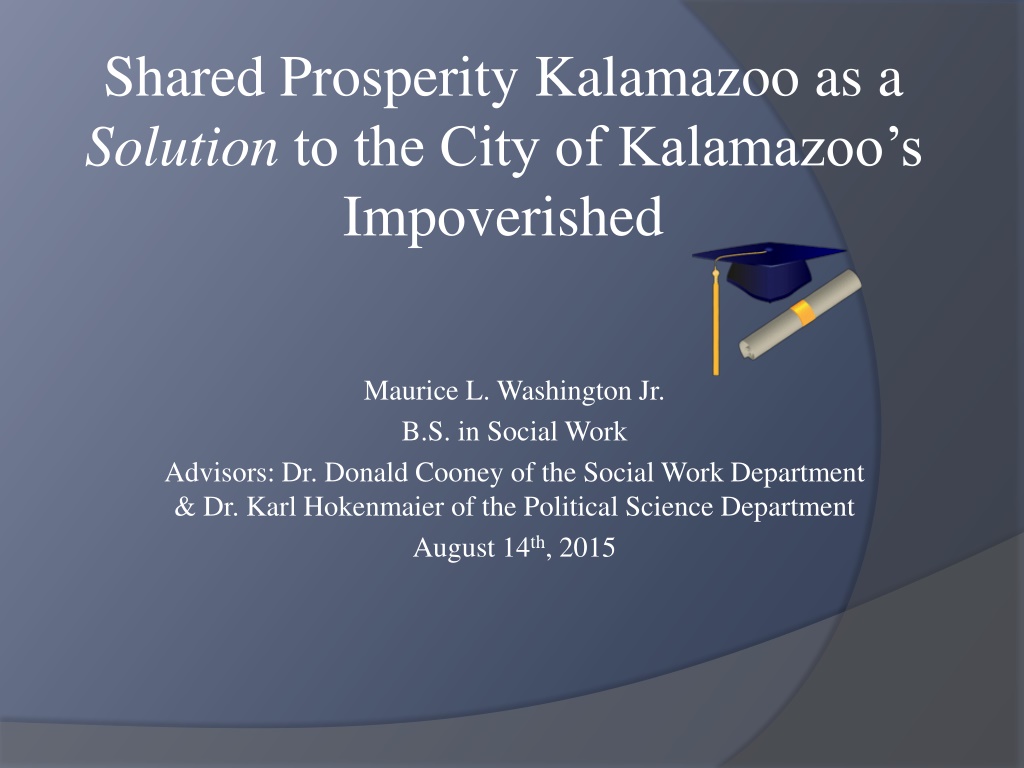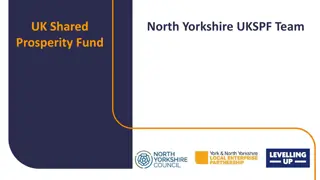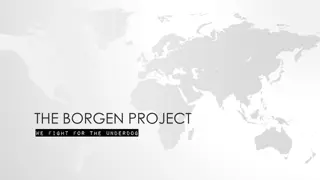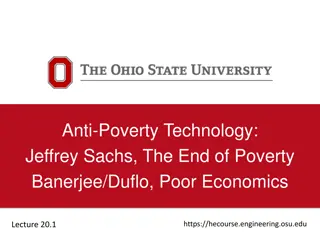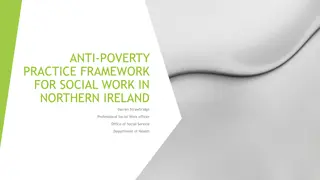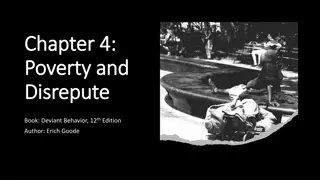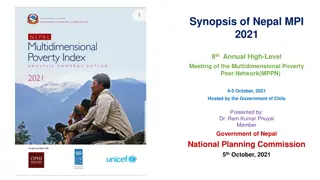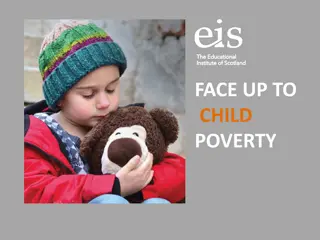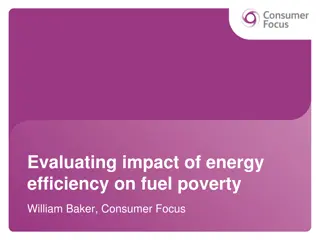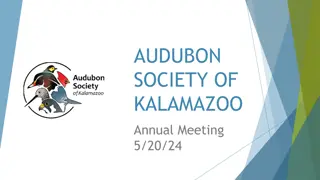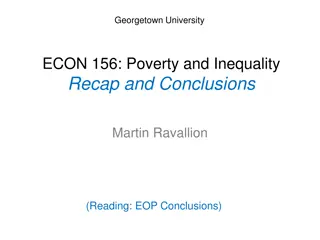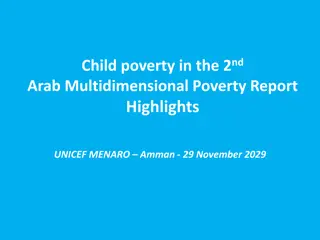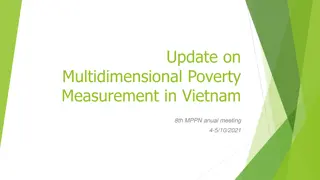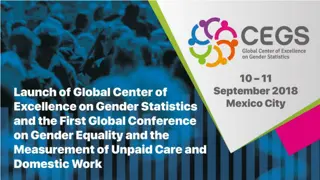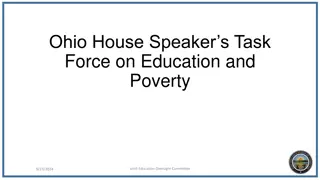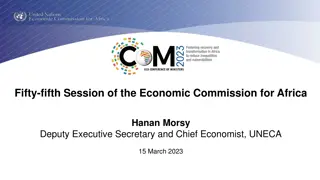Combatting Poverty Through Shared Prosperity in Kalamazoo
Addressing poverty in Kalamazoo through a comprehensive treatment plan rooted in an ecologically based approach, emphasizing a research-informed analysis for shared prosperity. Motivated by alarming poverty rates, the work aims to reduce poverty and improve the well-being of the community.
Download Presentation

Please find below an Image/Link to download the presentation.
The content on the website is provided AS IS for your information and personal use only. It may not be sold, licensed, or shared on other websites without obtaining consent from the author. Download presentation by click this link. If you encounter any issues during the download, it is possible that the publisher has removed the file from their server.
E N D
Presentation Transcript
Shared Prosperity Kalamazoo as a Solution to the City of Kalamazoo s Impoverished Maurice L. Washington Jr. B.S. in Social Work Advisors: Dr. Donald Cooney of the Social Work Department & Dr. Karl Hokenmaier of the Political Science Department August 14th, 2015
Table of Contents Introduction Summary of Related Work Motivation Behind Work Shared Prosperity Kalamazoo Treatment Plan Approach Research Informed Analysis Results from Research Concluding Remarks & Significance for Shared Prosperity Kalamazoo Acknowledgments Questions? Comments.
Introduction When you change what you believe, you change what you can do -American Author, Spencer Johnson General Thesis Goals: Poverty is an issue An issue that we can combat (reduce); not solve Specific Thesis Goals: Treatment Plan Emphasized Approach/Model Research informed practice of analysis and recommendations for Shared Prosperity Kalamazoo
Summary of Related Work A dichotomy between Social Work and Politics (One or the other) (Why not both?) Sociological, Cultural and Psychological + Political = Ecological (relations of living organisms to one another and to their environments) Thesis is Ecologically Based
Motivation Behind Work According to the American Community Survey (2009-11), only17% of cities within the United States with a comparable population size to the City of Kalamazoo, have worse poverty rates for all its citizens. More troublesome, only 4% of cities within the United States with a comparable population size to the City of Kalamazoo have worse poverty rates for children (Cooney, Moore & Ready, 2014). Cooney, D., Moore, S. & Ready, T. (2014). Kalamazoo united for shared prosperity (kusp): Basic principles and proposed strategy. Retrieved from http://www.wmich.edu/walkerinstitute/Kalamazoo_United_for_Shared-Prosperity.pdf
Poverty Rate for Individuals: 2000 and 2008-2012 40 35 34 30 25 24 2000 20 Percentage% 19 2008-2012 17 16 15 13 12 10 10 8 7 5 0 Kalamzoo City Kalamazoo County Out-County Michigan USA Cooney, D., Moore, S. & Ready, T. (2014). Kalamazoo united for shared prosperity (kusp): Basic principles and proposed strategy. Retrieved from http://www.wmich.edu/walkerinstitute/Kalamazoo_United_for_Shared-Prosperity.pdf
Shared Prosperity Kalamazoo functions as a treatment plan based on its overarching goal of fostering independent actions from all stakeholders involved that all contribute to the collective goal of garnering prosperity for everyone (in the process, reducing poverty for the impoverished). This overarching goal to gain prosperity for everyone through collectivity is centered on the notion that a City with high levels of poverty hurts everyone not just the impoverished. City of Kalamazoo. (2015). Kalamazoo city commission priority 5: Shared prosperity. Retrieved from http://www.kalamazoocity.org/document-library/doc_view/4562-shared-prosperity-plan.pdf.
Treatment Plan Approach A treatment plan begins with a collective goal in which those affected have a stake in its creation as they are the beneficiaries. Followed by this are the objectives and then there are the action steps to accomplish the objectives. Furthermore, the goals have to be S.M.A.R.T. goals: specific, measurable, attainable, realistic/relevant and timely. Kirst-Ashman, K. K. & Hull, G. H. (2009). Understanding generalist practice. Belmont, CA: Brooks Cole.
Micro vs. Macro Practicality Exs. Micro: The clinician will enroll Mr. Bradley in educational sessions on improving *coping skills* and he will attend this 1 hour a week every Tuesday for 2 months at the Borgess Health Center (located at 3025 Gull Rd.). Macro: SPK representatives will have an hour long Convening for Action meeting at City Hall (241 W. South St.) w/Businesses (on a voluntary basis) every last Thursday of the month for the duration of 6 months to continue supporting implementable practices that can better affect *low income employee retention rates*.
Research Informed Practice The Shared Prosperity Philadelphia Anti- Poverty Initiative (+): Mayor s Office of Community Empowerment and Opportunity. The NorthWay Plan for Poverty Reduction and Wealth Creation in North Minneapolis (-): NorthWay Community Trust (Northwest Area Foundation). Both have used the micro treatment model and SMART approach to some extent for their macro anti-poverty initiatives. Northwest Area Foundation. (2011). Gaining perspective: Lessons learned from one foundation s exploratory decade. Retrieved from http://www.nwaf.org/content/uploads/oldsite/FileCabinet/DocumentCatalogFiles/Other/GainingPerspective_Full_1-14.pdf Shared Prosperity Philadelphia. (2014). Progress report 2014. Retrieved from http://www.sharedproperityphila.org/shared-proseprity-progress-2014.pdf
Results from Research It takes a village Brand the issue for particular audiences Generate small success Effective conversations w/Employers* Intentionality/Evaluation Transparency Establish a devoted organizational entity w/full time members: criteria (CEO vs. NWCT) Leadership? (Future Exploration)
Concluding Remarks & Significance for Shared Prosperity Kalamazoo Major stakeholders involvement in Shared Prosperity Kalamazoo (Direct/Indirect)? Borgess/Bronson: Local Sourcing KVCC: Workforce Development K College: Research Stryker: Jobs (living wage jobs) WMU (Student Centered?): Early Childhood Development, Interns/Field Experience, Research, Tutors, Volunteers etc.
Acknowledgments I am forever grateful for the willing cooperation, patience, guidance and mentorship of my Honors Thesis Committee: City Commissioner and Professor of Social Work, Dr. Donald Cooney as well as Political Science Professor, Dr. Karl Hokenmaier. In addition, I would like to thank the staff and members of the Lewis Walker Institute for the invaluable experiences I have received throughout my time with the Institute: Dr. Timothy Ready, Tanya Bellamy, Gus Calbert, Dr. Lewis Walker, Dr. Douglas Davidson, Mr. Harold Beu, Mr. Shaghil Husain and Mr. Zachary Henderson. Lastly, I could not forget the support and camaraderie obtained from Dr. Toni Woolfork-Barnes from the First Year Experience Department as well as the members of SPK: Mayor Bobby Hopewell, Laura Lam, Ben Damerow, Kevin Ford, Andrew Haan, Peggy Rice and County Commissioner Stephanie Moore.
